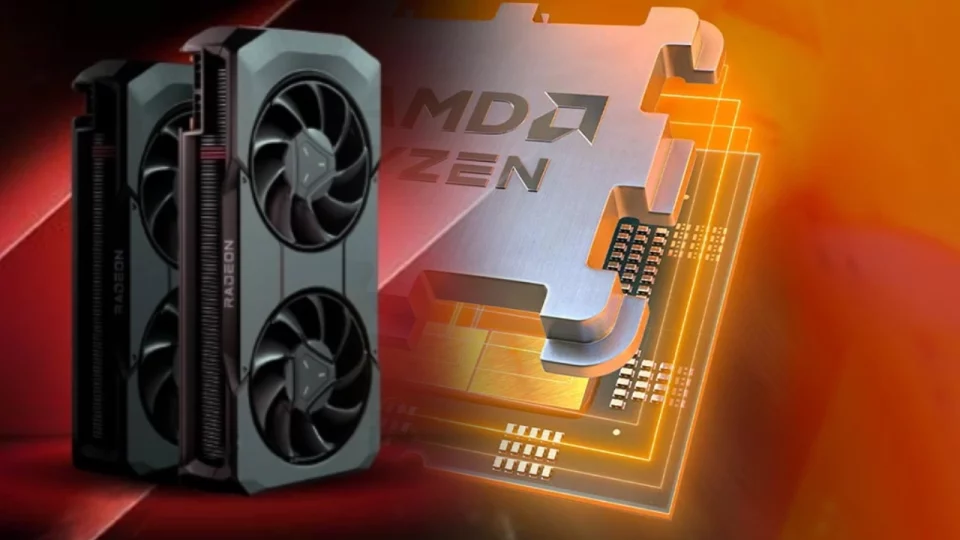The graphics card industry is no stranger to fierce competition, with AMD and Nvidia perpetually vying for dominance.
However, AMD’s recent announcement regarding the delay of its RX 9070 GPUs—the first in its RDNA 4 family—has stirred discussions across the tech community. Originally rumored to launch in January, AMD confirmed that these GPUs will not hit the shelves until March, a move that could have significant repercussions for the mid-range GPU market, especially as Nvidia prepares to roll out its RTX 5070 models.
This delay, revealed by David McAfee, Vice President and General Manager of Ryzen CPU and Radeon Graphics at AMD, was shared on X (formerly Twitter). While the news isn’t entirely surprising given AMD’s earlier statement that RDNA 4 graphics cards would launch in Q1 2025, the timing has left many enthusiasts and industry watchers questioning AMD’s strategy and the potential impact on its market position.
Table of Contents
Understanding the Delay
The original buzz surrounding the RX 9070 series suggested a January launch, aligning with AMD’s opportunity to preempt Nvidia’s anticipated February release of the RTX 5070 lineup. The delay to March has dashed these hopes and left AMD fans wondering why the company would miss such a strategic window.
Speculation suggests several factors could be at play:
- Manufacturing Challenges: Producing high-performance GPUs is an intricate process involving advanced fabrication nodes, such as TSMC’s cutting-edge technology. Supply chain constraints, issues in chip yields, or delays in securing necessary components might have pushed AMD’s timeline.
- Performance Refinement: AMD may be taking additional time to refine the RX 9070’s performance metrics to ensure it competes effectively with Nvidia’s RTX 5070 series. While rushing to market can gain early sales, it risks leaving a poor impression if the product underperforms.
- Software Optimization: Beyond hardware, the delay could also stem from fine-tuning AMD’s software stack. Drivers, firmware, and feature support—especially for ray tracing and AI-driven enhancements—are crucial to delivering a competitive user experience.
- Market Positioning: Another consideration could be pricing and marketing strategy. Nvidia’s RTX 5070 lineup’s performance and pricing will likely influence how AMD positions its RX 9070 series. A March launch allows AMD to observe Nvidia’s rollout and make final adjustments to its competitive strategy.
Check also: AMD’s Strix Halo Leak: The Future of Laptop CPUs Unveiled
What the Delay Means for AMD
Delays in the tech industry are not uncommon, but they can be costly in a market as competitive as GPUs. Here are some of the implications for AMD:
Missed First-Mover Advantage
By releasing the RX 9070 GPUs in January, AMD could have captured significant attention and sales in the mid-range segment before Nvidia’s RTX 5070 launch. This window would have allowed AMD to dominate a critical price-performance category for early adopters. Instead, Nvidia now has the opportunity to establish its RTX 5070 lineup as the default choice for gamers and creators looking for mid-range solutions.
Market Perception and Trust
The delay also risks alienating AMD’s core fan base. Over the past few months, AMD executives had hinted that the launch was “imminent” or “just around the corner,” raising expectations for an earlier release. For consumers eagerly awaiting an upgrade, the delay to March might feel like a broken promise, damaging trust in AMD’s communication.
Competition with Nvidia
Nvidia has been a dominant force in the GPU market for years, and its RTX 40-series cards have consistently outperformed AMD’s offerings in several key areas, such as ray tracing and AI features like DLSS. With the RTX 50-series, Nvidia is expected to further strengthen its lead. By the time AMD’s RX 9070 GPUs arrive, Nvidia’s RTX 5070 models will already be on the market, potentially locking in consumer interest and market share.
Potential Upside
On the flip side, the delay could also work in AMD’s favor. By taking additional time to fine-tune its GPUs, AMD can ensure the RX 9070 series is competitive both in performance and pricing. Additionally, a March release allows AMD to observe the initial reception of Nvidia’s RTX 5070 lineup, which can inform AMD’s final marketing and pricing decisions.
You might like also: AMD Unleashes Game-Changing Performance Boost for Ryzen 9000-Series
Nvidia’s Potential Advantage
Nvidia has long been the dominant player in the GPU market, and the RTX 50-series is poised to continue that trend. Here’s how AMD’s delay might give Nvidia an edge:
- Early Market Entry: By launching the RTX 5070 series in February, Nvidia will have a critical head start, potentially capturing a significant share of the mid-range market before AMD’s RX 9070 GPUs even arrive.
- Strong Brand Perception: Nvidia’s reputation for innovation, particularly in areas like ray tracing and AI-driven features, makes its GPUs the go-to choice for many consumers. If the RTX 5070 models live up to expectations, AMD’s RX 9070 series will face an uphill battle.
- Marketing Momentum: Nvidia’s marketing machine is a force to be reckoned with, and an early launch allows it to dominate the narrative around next-gen GPUs. By the time AMD enters the fray, Nvidia’s RTX 5070 series could already be seen as the “default” option.
